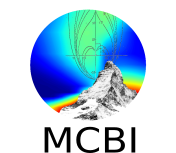Speaker
Description
Longitudinal multi-bunch instabilities limit the beam intensity and quality reach of hadron synchrotrons. In case the impedance source driving the instability is well known, for example an RF cavity, an active feedback can be set-up locally to reduce its effect on the beam. For multi-bunch instabilities excited by other impedances, global feedback systems are needed. A combination of both types is required to produce the high intensity beam for the future High-Luminosity LHC (HL-LHC) in the CERN Proton Synchrotron (PS). All RF cavities at 10 MHz, 20 MHz, 40 MHz and 80 MHz involved in the generation of LHC-type beams are equipped with direct, wide-band feedbacks. To achieve an impedance reduction beyond their electrical stability limit, they are complemented by upgraded local 1-turn delay and multi-harmonic feedbacks. Additionally, a global coupled-bunch feedback operating in the frequency domain with a Finemet cavity as longitudinal wideband kicker damps all possible dipole oscillation modes. Beam measurements in the PS are presented, highlighting the key contributors to stabilize highest intensity beams for the LHC.
